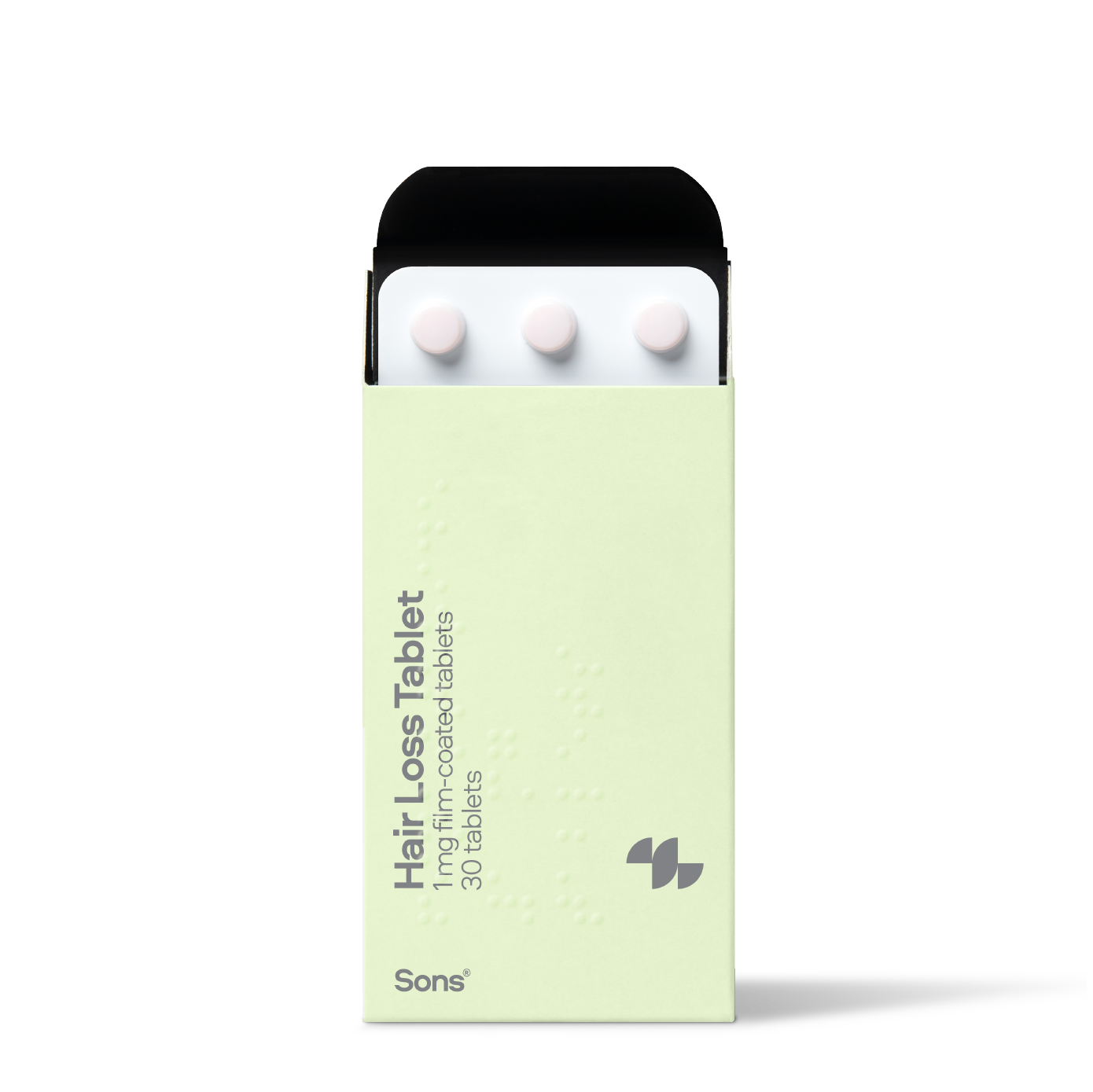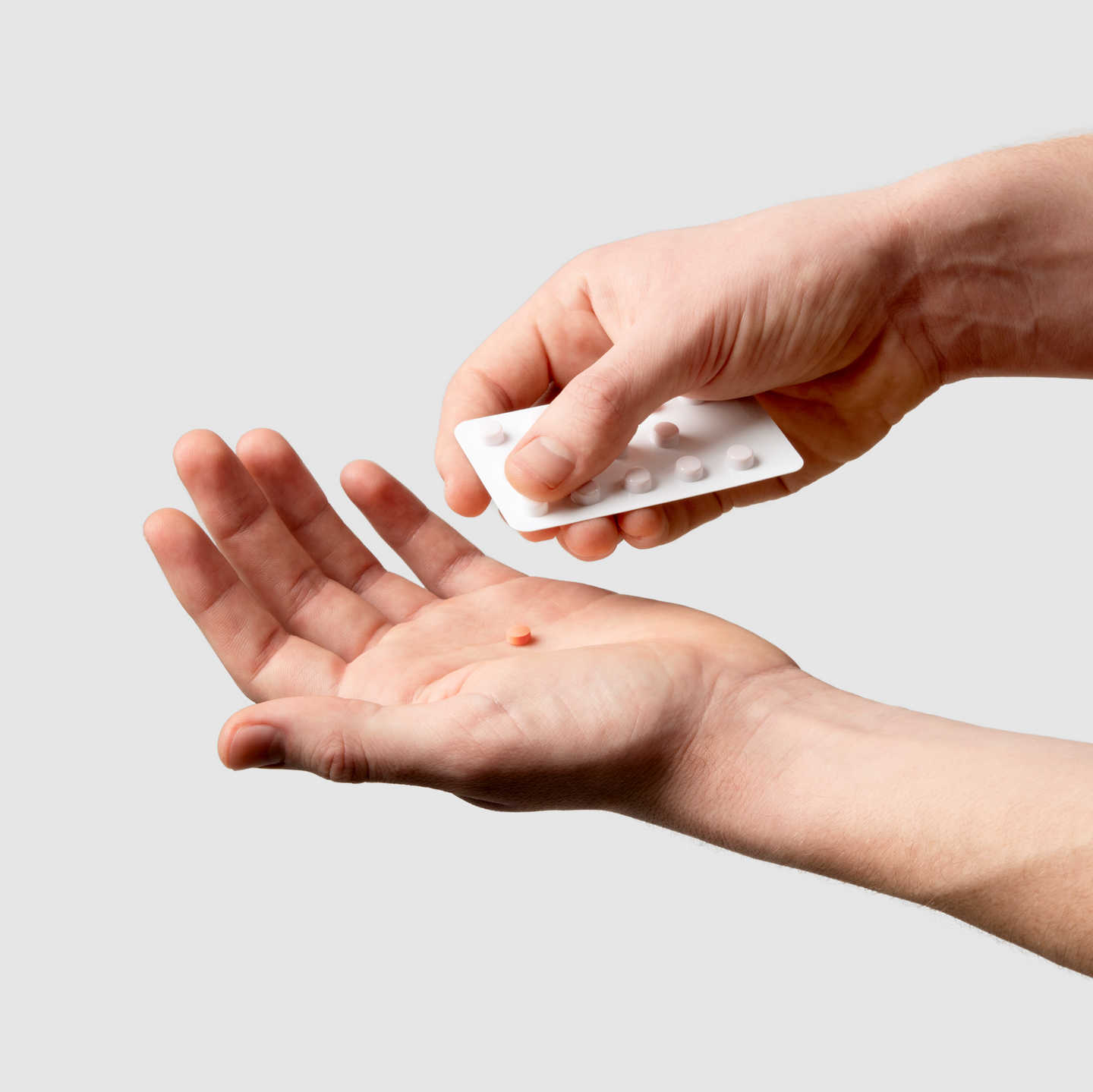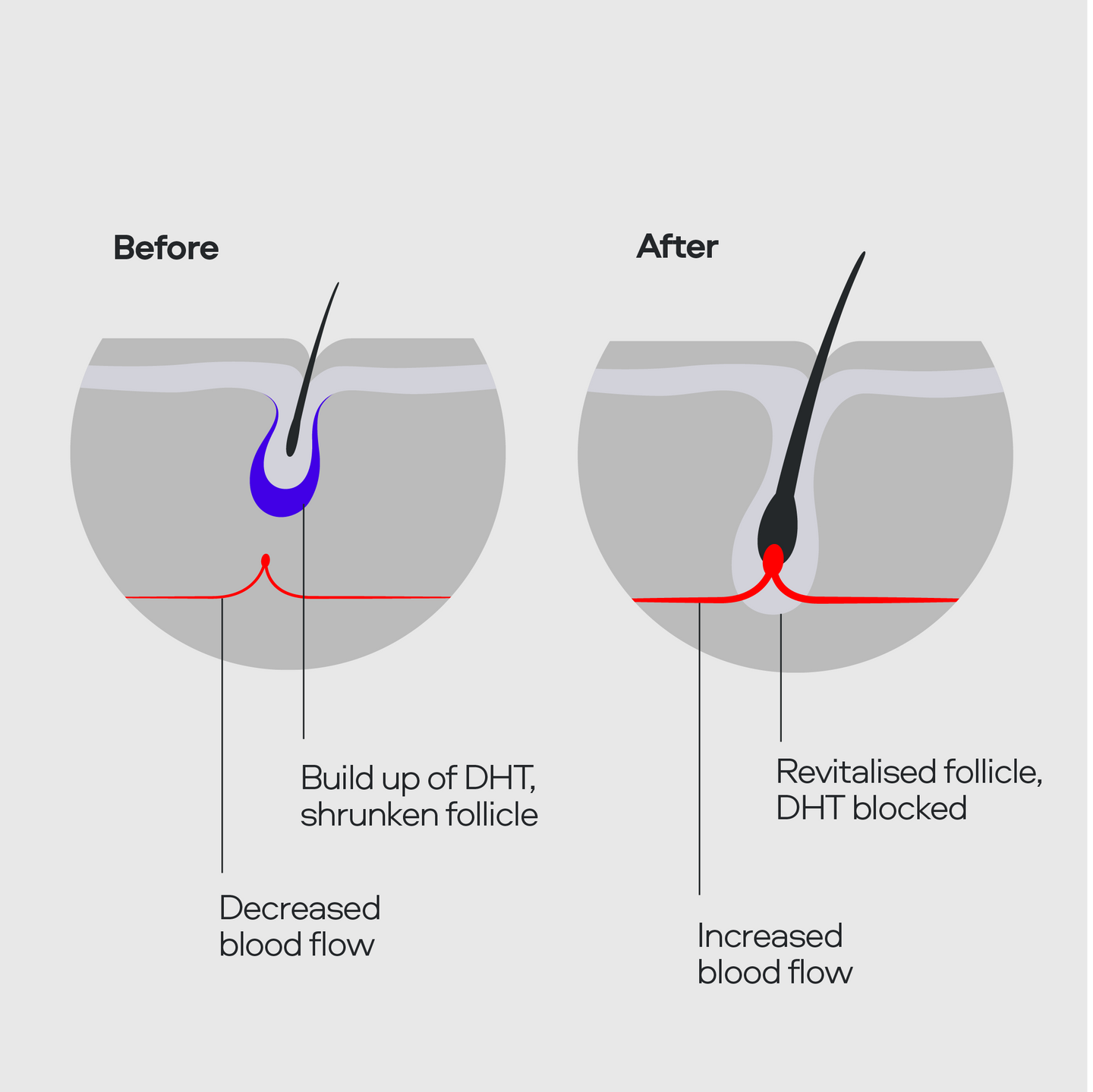Your Sons

Finasteride is an effective treatment for hair loss in men. It has been in use since the mid ‘90s when it was first licensed for use as a treatment for male pattern hair loss.
Here are the top facts you’ll read about on this page:

Finasteride works by blocking the production of the hormone DHT, a by-product of testosterone metabolism. DHT damages hair follicles and disrupts the hair growth cycle in men with a genetic sensitivity, leading to a process called miniaturisation, whereby hairs lose their structure and density, eventually leading to noticeable male pattern hair loss.
When taken consistently, Finasteride has been proven to lead to lower levels of DHT, giving hair follicles the space to recover and strands to achieve their full growth potential.

Hundreds of studies have been made on hair loss treatments, but the only two treatments that have been clinically proven are Oral Tablets and Minoxidil.
Sons is the only UK license holder for both.
Finasteride is a daily medication and consistency is key to success. Fortunately, it’s easy to consume and often comes in tablet form. Simply take the tablet on a daily basis with a glass of water.
We recommend taking Finasteride alongside one of your daily routines, such as brushing your teeth or with meals. Many guys also set daily reminders on their phones. Results won’t be instant, and although you will likely notice progress a little while after starting Finasteride, you will likely have to wait between 3-6 months before you see marked improvement. Patience is key!
Changes may only just be visible

Some men will shed fine hairs, this is normal and temporary
Hair may have considerably slowed or stopped completely

You may see signs of regrowth, particularly around the crown
Miniaturised hairs will be replaced by thicker, healthier hairs

Gradual improvement to hair density over time
Finasteride is a clinically proven hair loss prescription medication that works by blocking DHT - the hormone responsible for male-pattern hair loss.
View product




How does Finasteride work?
Finasteride is a daily medication and, unsurprisingly, consistency is key to success. Fortunately, it’s straightforward to consume and often comes in tablet form. Simply take the tablet on a daily basis with a glass of water.
We recommend taking Finasteride alongside one of your daily routines, such as brushing your teeth or with meals, for the best chance of being consistent with usage. Many guys also set daily reminders on their phones.
It’s important to remember that results will not be instant. Hair loss has not developed overnight, and so treatment results may take some time to see. The first sign of the medication working is that you may notice less shedding. Some people can notice the effects of thicker hair loss from as early as 3 months, however it can take anywhere between 6 and 12 months before this becomes apparent. Remember, the main sign that your hair loss has stopped that you show now worsening signs of hair loss in the coming months. Over time, improvement in hair quality and density can become visible. It can be useful to take ‘before’ and ‘after’ photos to help compare results after a few months to see if the treatment is working for you. Patience is key.
How long for Finasteride to work?
The results of Finasteride are often noticed at any time within 3-12 months of regular use. Remember to take the medication as prescribed and not to be disheartened by potential initial signs of hair shedding - this can be a sign the treatment is working!
Everybody is different so many people might notice significant effects early on, while other might only notice slight changes later down the line.
Speak to a Sons team member if you’re concerned about your plan or have any further questions.
Does Finasteride slow hair loss?
This medication effectively slows your hair loss. It does like by blocking the DHT androgen which contributes to male pattern hair loss, leaving your hair follicles in a healthy position to start accepting vital nutrients for the regrowth process.
Does Finasteride regrow hair?
Yes, there is evidence to suggest that Finasteride does promote hair growth by stimulating the cells around the hair follicles.
Because the DHT androgen has been blocked, your hair can now accept the vital nutrients it needs to grow and create new, healthier strands of hair.
Typically finasteride is effective in stopping hair loss at up to 90% of those who take it, in can also promote regrowth in approximately 60% of those who take it.
Finasteride Side Effects
While side effects of the treatment are rare, there are things you should be aware of just in case. The most common effects in men, however unlikely they are, appear to be regarding sexual activity. Problems getting and maintaining an erection or reduced desire for sex are among the side effects that have previously been reported.



Browse all articles

Finasteride is one of the only medications which is scientifically proven to treat male pattern hair loss, so doing everything....
Read more ›
As one of only two FDA-approved hair loss treatments, Finasteride has the potential to help you stop a receding hairline...
Read more ›
Finasteride is routinely prescribed to men who’ve experienced hair loss, whether it be mild or moderate...
Read more ›